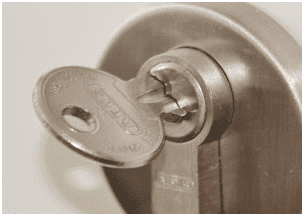A plus 1002 Sub-objective 2.1 – Summarize the importance of physical security measures.
dti Publishing Corporation, a company
registered in Delaware, has since 2001 helped more than 1 million IT professionals, students and career changers alike, to achieve certification through CertBlaster. Some of those people have brought back amazing stories of life changing turn-around. Some IT professionals have told us about that promotion they wanted finally coming through upon certification. Some long term unemployed career changers suddenly got back on their feet and so busy that their every minute was a scheduled event. Some students credit getting their first job in the field to succeeding at their certification. We have been doing this for a long time but never stop being amazed at what determined and courageous people can achieve when they set their minds to it. CertBlaster® exam simulations provide you with all you need when it’s time to start preparing for your certification exam.
Physical Security
The first area we will look at is physical security. Often marginalized or considered common knowledge, physical security is one of the primary defenses in the workplace. Enforcing locked entry points to secure areas is fundamental to overall security.
Mantrap
A mantrap, in simplest terms, is an area of controlled access between two secure areas. For example, consider a small room, with two doors, that is between two controlled access areas. The first door possesses a simple level of security allowing easy entrance into the space. The second door however has a higher level of security or different authentication method compared to the first door. Furthermore to prevent or at least minimize tailgating, the first door needs to be secured (closed) before the access mechanism(s) on the second door can be used. The second more secure door may require multifactor authentication. Optimally, each mantrap would be monitored by a security guard.
Badge reader
Access is provided through security badges that contain coded data that identifies users to the security system. These badges include a current picture in order to satisfy personal security challenges. User data can be stored on a magnetic strip or NFC contactless storage. The card should also have the company logo and be tamperproof.
Biometric locks
Using a person’s unique personal attributes such as their Iris, Fingerprint, or Voice to authenticate is known as biometrics. Biometric security is quite tough to fool. When setting up biometric locks, a sample of the attribute to be tested is provided. This is then stored in a database for comparison to any future access attempts. Often, a fingerprint scanner and a keyboard are combined in order to provide multifactor authentication.
Hardware Tokens
Tokens are a security component necessary for devices to communicate and provide the holder of the token the appropriate access level. Tokens are passed across connections to a card reader, a magnetic swipe, or via wireless communication.
Server Locks
A server lock is used to prevent unauthorized users from opening the server case.
USB locks
USB locks prevent access to a device through the USB port. USB locks are small plastic plugs which are placed in the port(s). A USB drive can be used to access data or install malware. Consider any physical port a potential vulnerability.
Privacy screen
Privacy filters are employed by users who work in close proximity to others and require security from shoulder surfing. The screen filter narrows the monitor’s viewable angle to direct the output only to the desired user.
Entry control roster
An entry control roster is a list of people with valid credentials that is used by security personnel to log these parties. This covers 220-1002 objective 2.1! Keep pushing! Good luck on the test.




